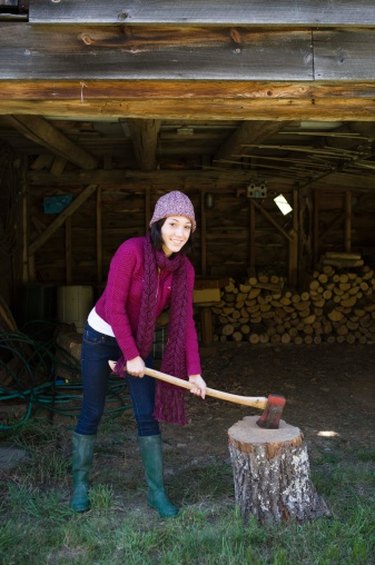
Traditional fireplaces and outdoor fire pits are just a couple of places in which a controlled, man-made fire may be desired. While some people think all kinds of woods burn easily, there are actually many factors that go into determining how quickly a wood fire ignites and burns.
Dry Wood
Video of the Day
When looking for a fast-burning wood, choose wood that has been dried. Wet wood wastes energy from the fire, as the fire must first evaporate the water contained in the wood, and also burn the wood itself. Wet wood produces more smoke, less flame, and overall slower burning time. Wood is usually air- or kiln-dried when bought at a local lumber store.
Video of the Day
Seasoned Wood
When wood is recently cut, it is called "green" wood, and is still young compared to older "seasoned" wood. Because unseasoned wood is more recently cut, more moisture is in the wood as compared to older wood. Fresh-cut wood may look lighter along the cut edges, and its bark is usually tightly attached to the interior wood. Like wet wood, unseasoned wood may be difficult to light and may produce a lot of smoke when burned. In contrast, seasoned wood should burn quickly because of its relative dryness.
Softwood
Softwoods, such as spruce and red cedar wood, are less dense than hardwoods like elm, oak, and beech wood. Because of this lower density level, softwoods burn more quickly than hardwoods. Most hardware or lumber supply stores should carry a wide variety of both hardwoods as well as softwoods, so look for softwoods when searching for fast-burning wood.
Resinous Wood
Woods that contain a lot of resin tend to burn more quickly and light much faster because of their resin content. Coincidentally, resinous woods are often softwoods, and include spruce and pine wood. This combination of resin content and low density wood means both easy ignition as well as a short burn time when compared to non-resinous hardwoods.